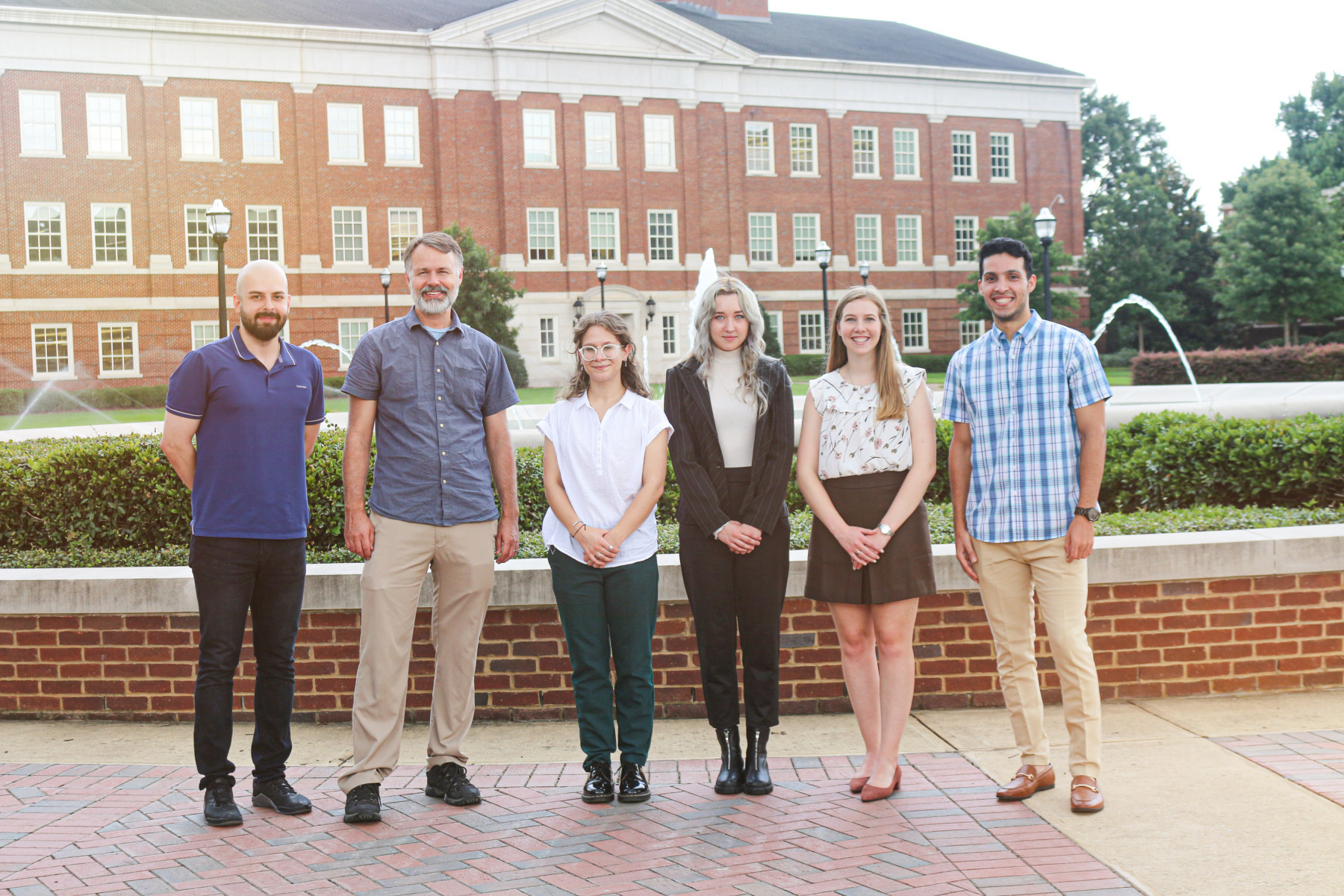
The research team led by Dr. Mostafa Firouzjaei (far left) and advised by UA professor Dr. Mark Elliott (second from left).
A research team from The University of Alabama’s College of Engineering will further its efforts to reduce groundwater contamination after recently receiving a $25,000 grant from the Environmental Protection Agency (EPA).
UA’s team was one of 16 student teams selected nationally to receive funding as part of the 18th Annual P3 Awards: A National Student Design Competition Focusing on People, Prosperity and the Planet. The competition charges student teams with developing innovative solutions for a sustainable future.
“The students honored [as part of the P3 Awards] are leading the way when it comes to developing cutting-edge research to address some of our most challenging environmental concerns,” said Chris Frey, assistant administrator for EPA’s Office of Research and Development. “I’m excited to support the next generation of scientists and engineers through EPA’s P3 program.”
UA’s team of students will use the grant to build upon its previous research centered on novel membrane fabrication. The research seeks to remove perfluoroalkyl substances (PFOAs) such as industrial and commercial contaminants. The team has created an ultra-thin film nanocomposite membrane that can be used in a membrane-based separation process and offer a sustainable approach to the removal of harmful substances from wastewater. While the membranes are not yet able to purify water to levels safe enough for drinking, they are still beneficial in reducing the threats that pollutants, toxins and carcinogens in wastewater pose to both humans and animals.
Instead of using conventional static manufacturing techniques to make the polyamide membranes, the team’s technology uses centrifugal force to fabricate the membranes. The membranes’ recovery rate and longevity are increased by this method.
Research engineer Dr. Mostafa Firouzjaei, who began the membrane research as part of his doctoral project, believes the specialized membranes offer an array of benefits to societies.
“Most universities focus primarily on the performance of the products they are producing in the lab rather than how sustainable they are,” said Firouzjaei. “Not only does our membrane perform well, but it is also green and environmentally friendly, which are undoubtedly added benefits.”
The team, which is led by Firouzjaei and advised by Dr. Mark Elliott, UA professor of civil, construction and environmental engineering, includes three undergraduate students, one master’s student and four doctoral students.
Firouzjaei and the team are currently in the first phase of the program and will utilize the EPA grant to purchase materials as well as fund stipends for the undergraduate and graduate researchers on the team. The team will present on the project’s advancement at a conference for the Materials Research Society (MRS) in Boston later this year.
If the team fulfills the research goals presented in its initial proposal within the next year, it will have the opportunity to apply for a second-phase grant worth $100,000 to continue working on the project.
“For our team, this is simply the beginning of an adventure with this novel technology. I am confident, that by our inspiring students, we will be able to advance this project to the larger scale and mitigate some challenging environmental issues for our society,” said Firouzjaei.